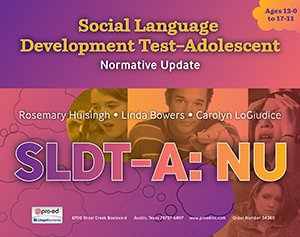Related Products
For Professionals
- Amplification
- Assessment of Student Skills, Challenges, Needs
- Early Childhood: Infants, Toddlers, Preschool
- Hearing Loss – Identification, Impact and Next Steps
- IDEA Law Summary Information
- Language and Speech Development Issues
- Legal Issues in Serving Children with Hearing Loss
- Listening (Auditory Skills) Development
- Planning to Meet Student Needs
- Self-Advocacy Skills for Students with Hearing Loss
- Self-Concept: How the Child with Hearing Loss Sees Himself
- Social Skills
- Speech Perception & Learning
Related Teacher Tools Takeout Items
Key Factors in Language, Social, and Developmental Outcomes for Children with Hearing Differences
Children with hearing differences face multiple challenges in acquiring language and achieving social well‑being. Research consistently shows that early intervention, robust language support, and attention to social factors are critical for improving developmental outcomes.
Early Intervention: Timing & Type Matter
● Studies repeatedly demonstrate that children identified and receiving intervention before 6 months of age perform significantly better on measures of vocabulary, grammar, comprehension, and expressive language than those who begin later. PubMed+2PubMed+2
● Cochlear implantation before age one is associated with substantially better language outcomes—both receptive (understanding) and expressive (speaking)—compared to implantation later. Wiley Online Library+2PubMed+2

● Early amplification (e.g. hearing aids) also contributes to superior outcomes in speech and language, especially in children with less severe hearing loss. PMC+1
● Family involvement and mode of communication are significant moderators: children whose caregivers are heavily involved show greater gains, especially when interventions start early. PubMed+1
Language Development: What Early Intervention Enables
With early detection and appropriate interventions, children with HI often reach
near‑age‑norm levels in many areas of language such as
○ vocabulary,
○ grammatical comprehension,
○ sentence formation, and
○ expressive language.
However, full parity in all language domains is less certain, particularly for children who begin intervention later. PubMed+2Wiley Online Library+2
● The sensitive period for auditory input is crucial: exposure to sound and language during this window supports the neural wiring necessary for language acquisition. Delays in input (e.g. delayed amplification or implantation) tend to lead to vocabulary deficits, simpler sentence structure, and slower grammatical development. Wiley Online Library+2PubMed+2
● The variability in outcomes remains high. Some children reach or approach typical hearing peers’ levels, while others lag behind, with factors such as severity of hearing loss, presence of additional disabilities, quality and consistency of therapy, and family or environmental support explaining much of that variation. PubMed+1
Social Well‑Being: Beyond Language Skills

Social well‑being encompasses self‑esteem, peer relationships, experiences of inclusion,
psychological well‑being, and participation in activities. Multiple studies show that children
with HI can achieve social outcomes close to those of their hearing peers, especially when early
intervention is in place. BioMed Central+1
● For example, children identified early via newborn hearing screening, with early auditory access (via technology and therapy), report rates of bullying, victimization, social difficulties, and self‑reported distress that are similar to hearing peers. PubMed
● Mental health risks (anxiety, depression, emotional or behavioral difficulties) are elevated in Deaf or Hard‑of‑Hearing (DHH) youth compared to hearing peers; language ability and social inclusion are among the protective factors. PubMed+1
● Peer participation, friendships, a sense of self (identity), and the ability to communicate in social settings all depend heavily on competent language development and consistent access to hearing and communication supports. Social well‑being is not just a byproduct of language competence—but a central outcome that influences overall quality of life.
Implications & Recommendations
● Screening & identification must occur as early as possible (ideally at birth, with confirmation and start of intervention by 3‑6 months). Delays in this chain shrink the window for optimal developmental gains. PubMed+2CDC+2
● Intervention plans should be intensive and frequent, with high‑quality hearing devices (hearing aids or cochlear implants), consistent auditory‑verbal or listening and spoken language therapy, and rich language exposure both in and outside therapy.
● Family engagement is vital: caregivers must be involved in therapy, communication models, and in creating language‑rich environments at home. Parent education, support, and communication mode choice are important.
● For children with additional disabilities, intervention must be adapted: progress tends to be slower or more variable, and outcomes depend substantially on the nature and severity of additional needs. Frequent monitoring and flexible, individualized plans are needed.
● Supporting social inclusion is critical: interventions should not only target language outcomes but also peer interaction, self‑esteem, psychological health, and participation. Schools, therapy providers, and community programs need to coordinate to build inclusive environments.
Selected References
● Effect of Early Intervention on Language Development in Hearing‑Impaired Children. PubMed
● Early intervention and assessment of speech and language development in young children with cochlear implants. PubMed
● Impact of early intervention on expressive and receptive language development among young children with permanent hearing loss. PubMed
● Social inclusion for children with hearing loss in listening and spoken language early intervention: an exploratory study. BioMed Central
● Psychological well‑being and mental health risks in deaf and hard of hearing youth: a systematic review. PubMed

